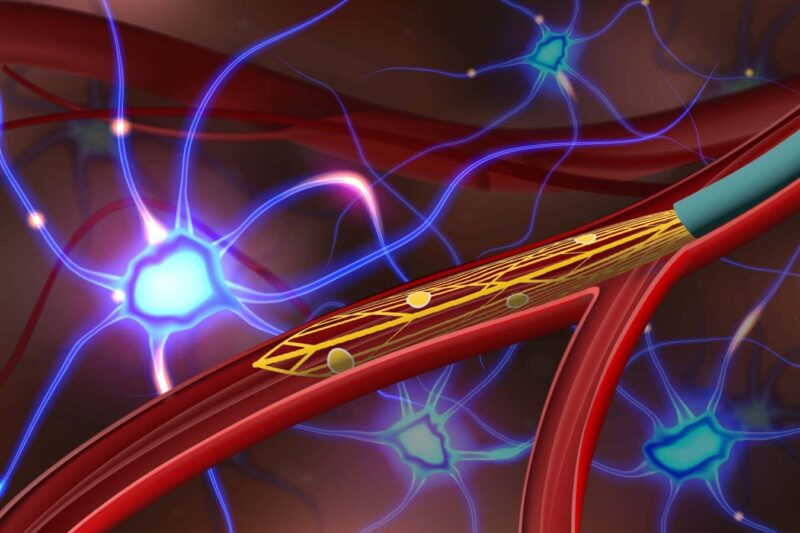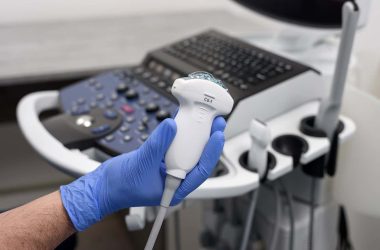The probe (yellow) can be inserted into a blood vessel via a catheter (cyan)
Anqi Zhang, Stanford University
Rats have been injected with a small, flexible probe that records brain activity without the need for surgery. This technology could one day be used to monitor and treat brain conditions in humans without invasive procedures.
Brain-machine interfaces (BMIs) are implanted devices that record electrical signals in the brain and transmit them to a computer. They can also be used for deep brain stimulation, which uses electrodes to regulate abnormal impulses. BMIs have been instrumental in neuroscience research and treating neurological conditions like Parkinson’s disease, according to Charles Lieber, an emeritus professor at Harvard University.
While some BMIs use sensors placed on the scalp, their recording resolution is often poor due to the skull dampening brain signals. To measure brain activity more accurately, electrodes are typically implanted through open-skull surgery.
Lieber and his colleagues have now developed a BMI that aims to overcome the trade-off between invasiveness and resolution. Their device utilizes the blood vessels in the brain, which are only a few micrometers away from the neurons, making them a suitable place for monitoring brain activity. The team created a flexible polymer probe, 7-centimeters in length, embedded with 16 electrodes, capable of navigation through microscopic blood vessels.
The researchers made a small incision in a group of rats’ necks and guided the probe to the base of their brains using a 10-micrometer-wide catheter. Once inserted into a blood vessel, the probe expanded and adhered to the vessel’s walls, allowing the electrodes to detect signals from nearby neurons. The rats experienced no noticeable side effects during the procedure.
Lieber mentions that the current prototype of the probe contains a small number of electrodes compared to surgical implants, which can have around 1000 electrodes. Increasing the number of electrodes could improve the device’s accuracy. However, he states that the probe will likely not be used alone in monitoring brain activity and conditions.
The team aims to conduct trials with this technology on humans in the future to potentially treat conditions such as epilepsy and Parkinson’s disease. However, Lieber emphasizes the importance of ensuring the probe’s safety and effectiveness in human subjects, which will require additional time.
Salman Qasim, from the Icahn School of Medicine at Mount Sinai in New York, comments that this study could lay the foundation for minimally invasive implants in blood vessels, providing access to brain regions with intricate blood vessel arrangements.
Topics:








